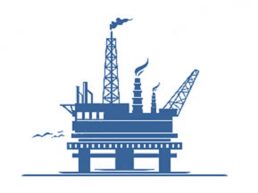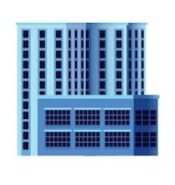



Cable tray
wiring systems offer significant advantages over conduit pipe and other wiring systems. Cable tray is more cost efficient, more reliable, more adaptable to changing needs and easier to maintain. In addition, its design does not contribute to potential safety problems associated with other wiring systems.
Cable tray plays a vital role in industrial areas. Cable trays act as a supporting system for power and communications cables. a cable tray facilitates upgrading, expanding, reconfiguring, or relocating networks. Generally, in most industrial areas the cable tray systems are open type, to allow efficient heat dissipation and easy access for replacement and repairs..
Cable tray shall be by one manufacturer and shall consist of straight sections, fittings and accessories per NEMA VE1-2006/CSA C22.2 No. 126.1-02. Cable tray must be listed by UL as equipment grounding conductor. There shall be no burrs, projections or sharp edges to damage the cable insulation.
Cable tray installed in industrial
application supports pretty much all types of cables such as:
– High Voltage Power supply lines.
– Power Distribution Cables
– Control cables
– Optical Fibre Cables.
:Material
ــ Aluminum – All side rails and rungs shall be of extruded aluminum type 6063-T6.
- Offers an excellent strength-to-weight ratio.
- Corrosion resistant.
ــ Pre galvanized steel – all side rail and rungs shall be of steel conforming to the requirements of ASTM A653/A653M-06a with G90 coating thickness. Side rail shall be reinforced with flanges turned inward.
ــ Hot –dipped galvanized steel – All side rails and rungs shall be made from steel conforming to the requirements of grade ST 37 and shall be hot-dipped galvanized after manufacture per ASTM A123.
- Electric shielding.
- Low thermal expansion.
- Stainless steel – All side rails and accessories shall be of type AISI3616 stainless steel.
Generally, in most industrial applications the cable trays are made up of galvanized steel, aluminum, materials. But, galvanized trays are made by Pre-galvanized steel sheet fabricated into the tray ,Hot dip galvanized after fabrication.
In the case of the galvanized tray, usually, it must be coated with the zinc-rich compound in the broken areas to protect the metal from corrosion.
Tray Type
– Ladder tray shall incorporate two side rails connected by lateral rungs.Rungs shall provide minimum 2 cm. bearing surface and have slots perpendicular to the centerline of the rung on 2 cm. centers for attachment of cable ties. Rungs shall also have an open slot to facilitate attachment of pipe straps and other accessories. Rungs shall be installed at 20, 25 or 30 cm. Spacing. The rungs shall not be below the bottom of the side rail.
A cable ladder is the most robust option for supporting heavy-duty cables – even over very long distances. Engineers use them to distribute and carry large amounts of wiring and enhance the safety of the space in the plant.
Ladder– Ladder tray shall incorporate two side rails connected by lateral rungs.Rungs shall provide minimum 1 in. bearing surface and have slots perpendicular to the centerline of the rung on 1 in. centers for attachment of cable ties.
Rungs shall also have an open slot to facilitate attachment of pipe straps and other accessories. Rungs shall be installed at 20, 25 or 30 cm . Spacing. The rungs shall not be below the bottom of the side rail.
A cable ladder is the most robust option for supporting heavy-duty cables – evenover very long distances. Engineers use them to distribute and carry large amounts of wiring and enhance the safety of the space in the plant.
Solid Bottom – Solid bottom tray shall incorporate two side rails connected by rungs
on 30 cm. centers with a solid sheet applied below the rungs.
Ventilated trough – Ventilated trough tray shall incorporate two side rails connected by rungs at 10 cm. spacing.
Dimension
•
Side rail height – Side rails heights shall be 4~20 cm.
•
Length – All cable tray straight sections shall be supplied in
2- 3 m and 6 m lengths.
•
Width – Cable tray shall be supplied 5~100 cm and
110 cm. widths as required.
• Radius fittings – For all fittings
requiring a radius, that radius shall be 15, 30, 60 cm. and shall be measured
to the nearest perpendicular surface.
Accessories
and accessories – Covers shall be supplied to protect tray cable where needed.Appropriate hold-downs shall be supplied to properly attach the covers to the tray.
Splice plates – Aluminum splice plates shall be designed to snap into tray side rail and shall be supplied with four square neck carriage bolts and hex nuts for attachment. Steel splice plates shall be supplied with four square neck
carriage bolts and hex nuts for attachment.
Cable tray shall meet specified NEMA/CSA load ratings with safety factor of 1.5. The cable tray should also be able to support a 90 kg concentrated load at midspan over and above stated cable load.
